Back in 2022, Malaysia Airlines announced plans to refurbish all of its Boeing 737-800s with new Business and Economy Class seats. These aircraft form the backbone of the Malaysia Airlines fleet, and while the national carrier hopes to retire them by 2028 in favour of the Boeing 737-8 MAX, the current cabin products had been in service for more than a decade and were due for an upgrade.
Besides, a cabin refresh provided a golden opportunity to save fuel the earth, with the airline introducing lighter seats and soft cabin dividers, and perhaps most controversially, removing seatback entertainment screens.
Of course, this development was greenwashed like crazy, with airline executives proudly touting “sustainability” at every turn. I mean, sure— if you mean financial sustainability. The new interiors have resulted in a 679kg weight reduction, saving 91,000 liters of fuel per aircraft per year.
So how does the eco(nomics)-friendly new cabin measure up?
| ✈️ tl;dr: Malaysia Airlines B737-800 Business Class | |
| Malaysia Airlines’ refurbished B737-800s feel more budget than full service, and the lack of Wi-Fi will be an issue on longer flights. | |
| 👍 The Good | 👎 The Bad |
|
|
| ↩️ Tokyo Detour |
Malaysia Airlines B737-800 Business Class
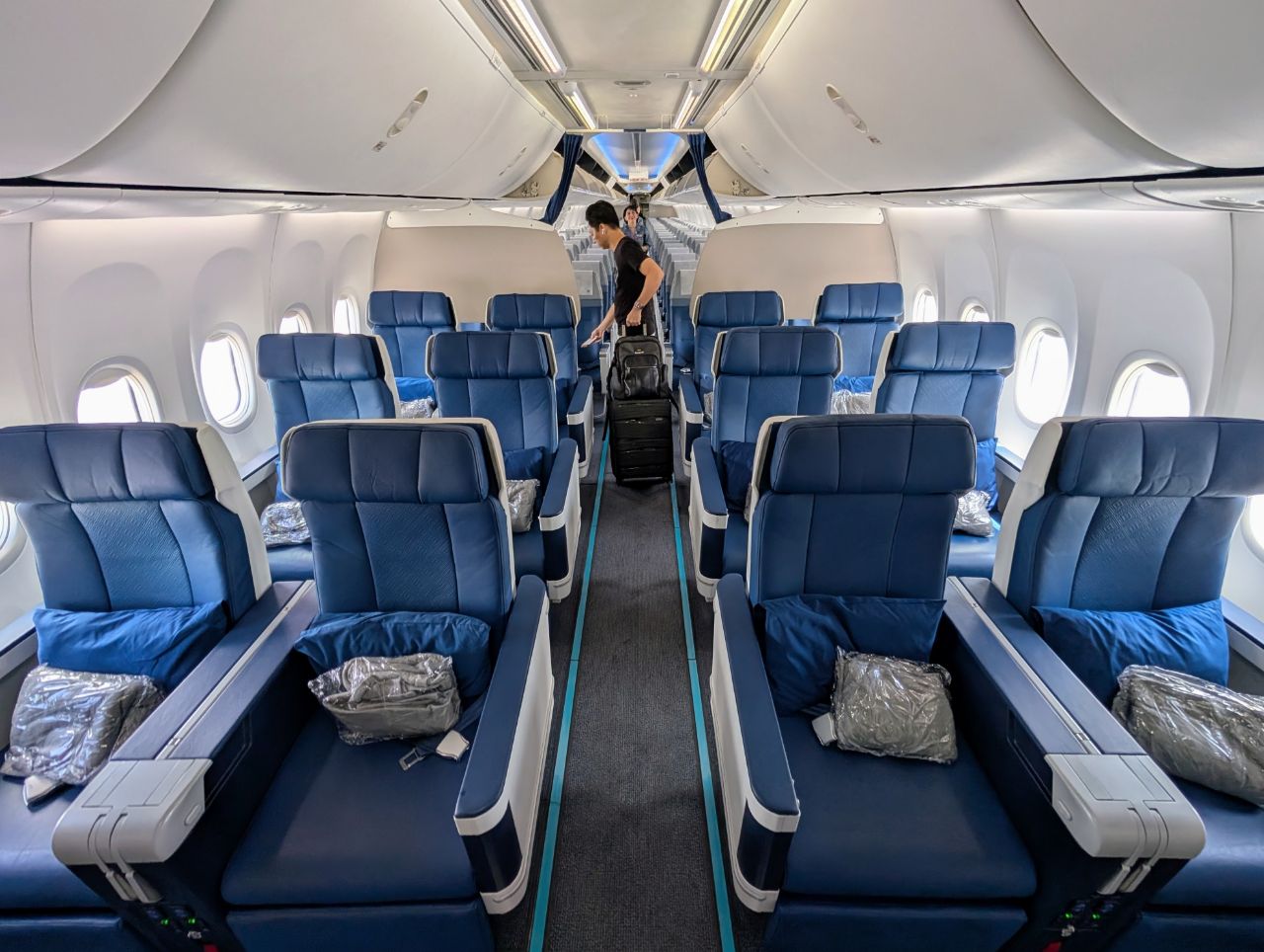
Malaysia Airlines has a total of 174 seats on its refurbished Boeing 737-800s, split into 12 seats in Business Class (2-2) and 162 seats in Economy Class (3-3). Compared to the original B737-800s, an extra 18 Economy Class seats have been added at the expense of four Business Class seats.

The Business Class seats are manufactured by Safran, and based on the Z600 platform that comes with a six-way adjustable headrest and a “unique cradling motion kinematic”, whatever that means.
The first thing you’ll notice about this cabin is how very blue it is. Blue has always been Malaysia Airlines’ signature colour, but they’ve really let themselves go here. From the seatbacks to the headrests, to the pillows and blankets, there’s enough blue here to make a Smurf blush. That’s not limited to Business Class, mind you. The Economy Class seats, which were previously a mix of red and maroon, are now solid blue too.
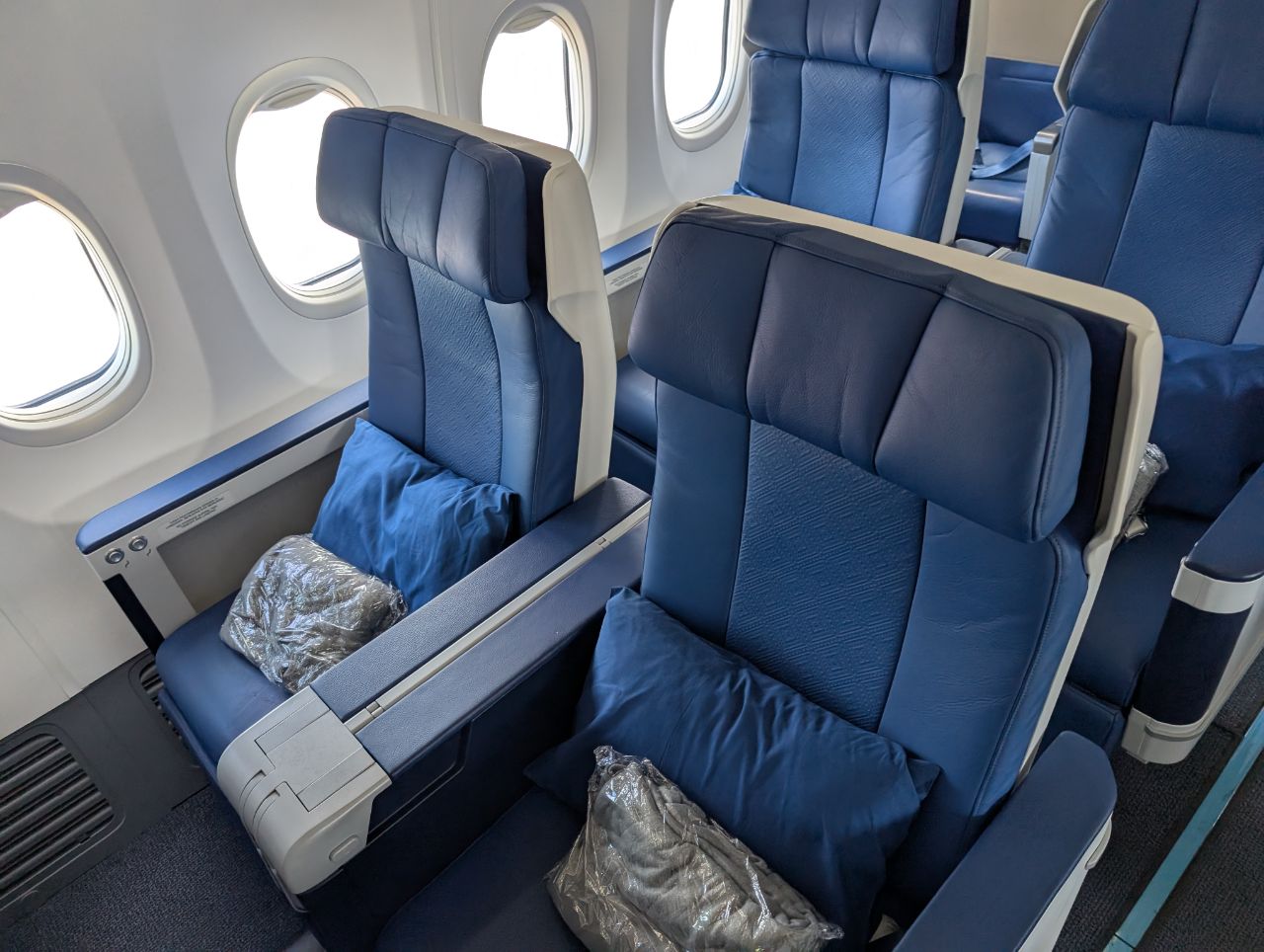
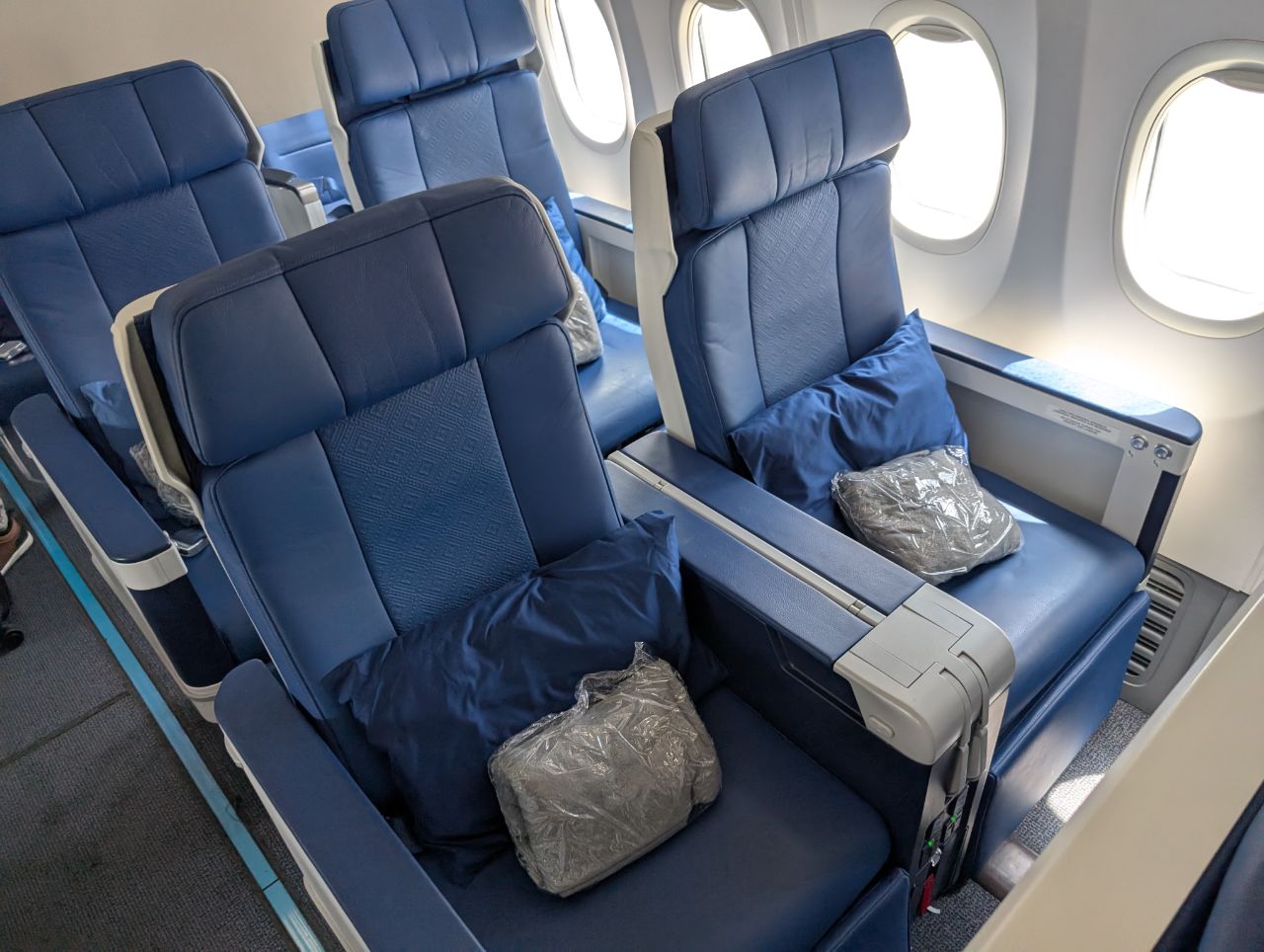
The second thing you’ll notice is that there’s no longer a solid divider between the Business and Economy Class cabins. Instead, there’s a blind that extends about halfway down. This is actually to the benefit of the first row of Economy Class, as they have some additional legroom to enjoy now that the lower part of the partition no longer exists.
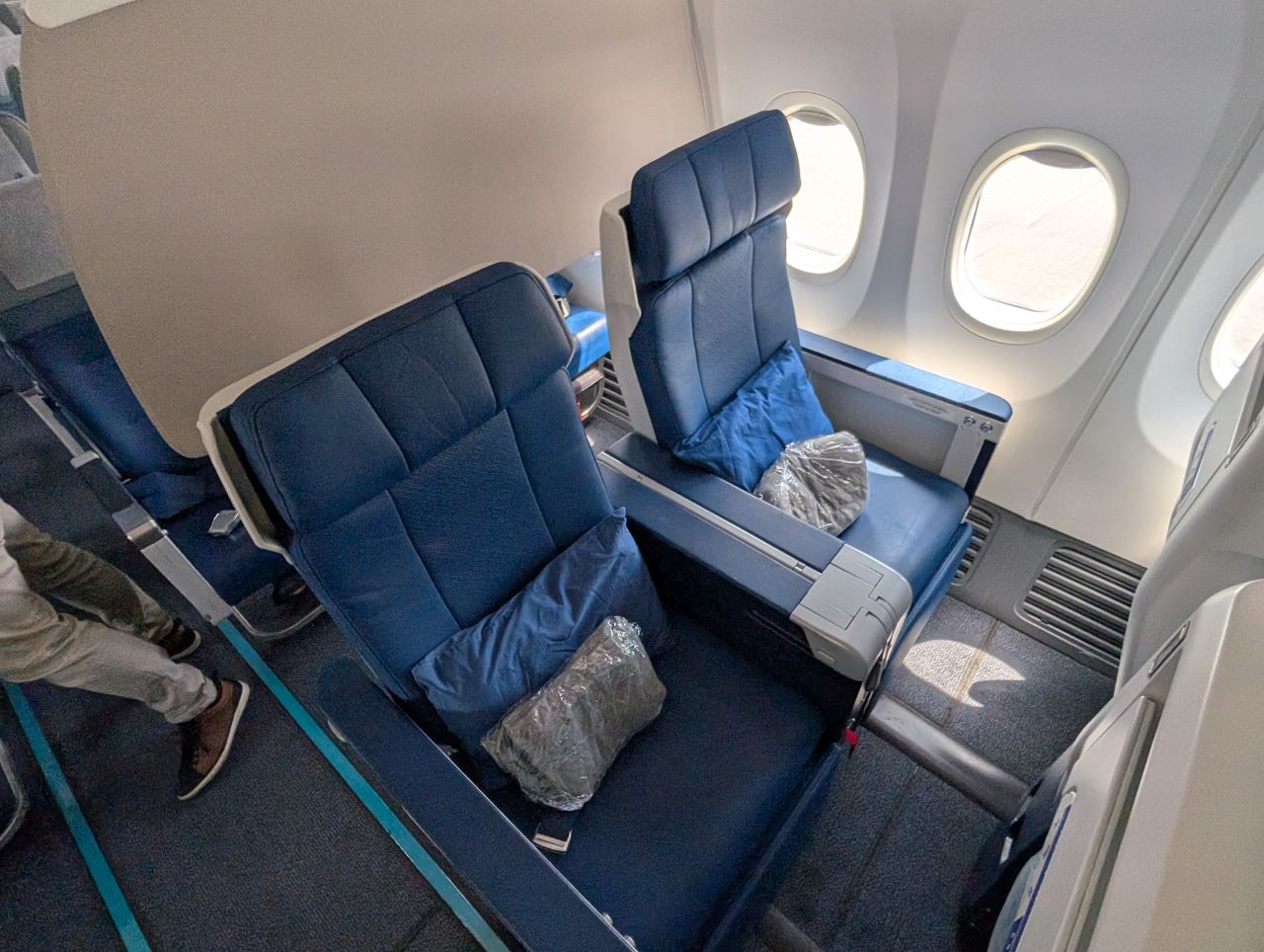
These leather-upholstered seats feature a 39-inch seat pitch, and an 8-inch recline (passengers seated in the last row aren’t robbed of any recline either). The seats are noticeably less padded than the previous generation — another weight reduction measure no doubt — but when you put a pillow behind your back it’s not so bad.
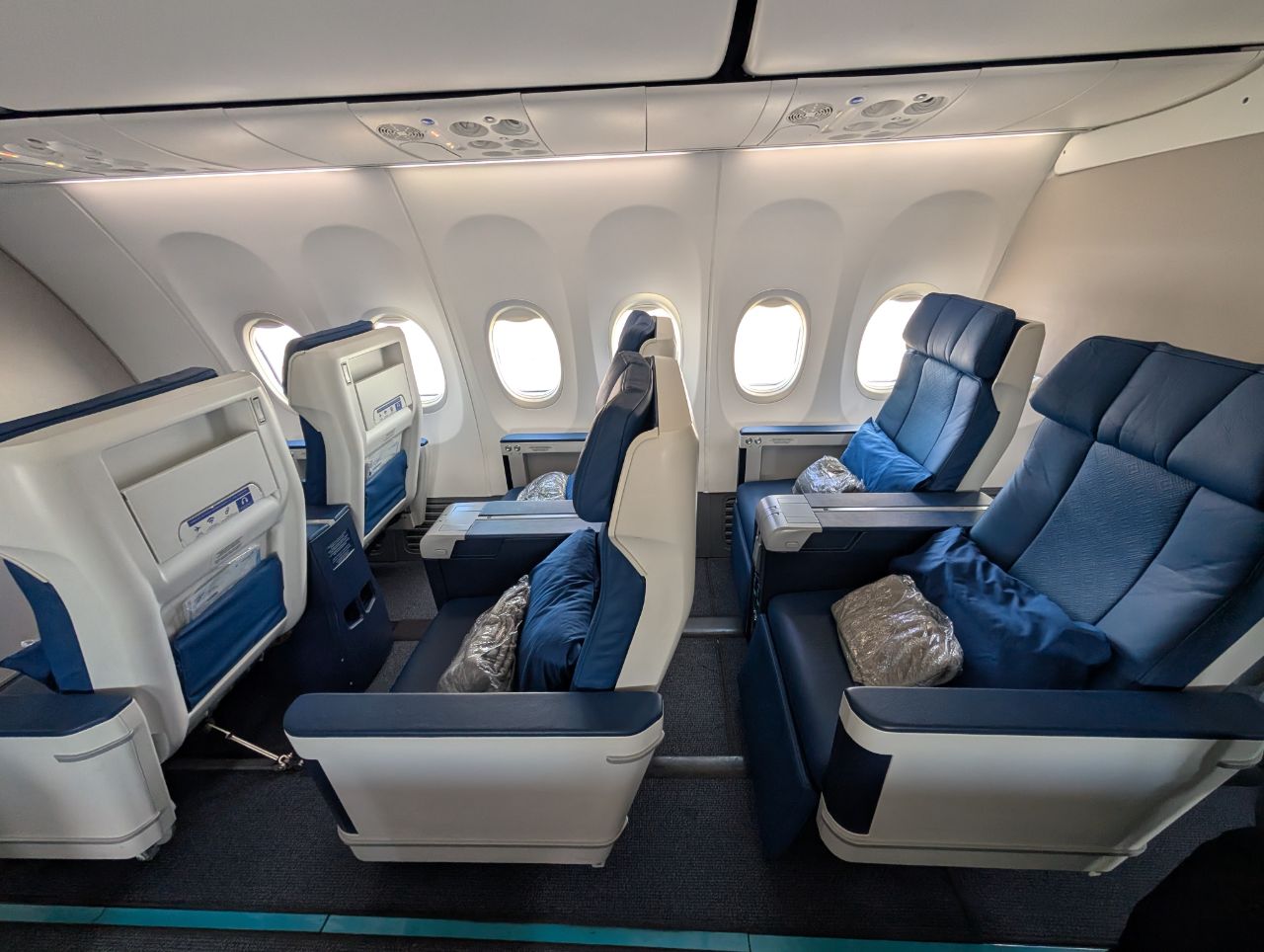
In terms of seat selection, it’s important to note that there is an annoying strut at foot level for all aisle seats (C/D). This eats into your legroom and under seat storage space.

If this is a deal-breaker, go with the window (A/D) seats instead, which have no such obstruction.
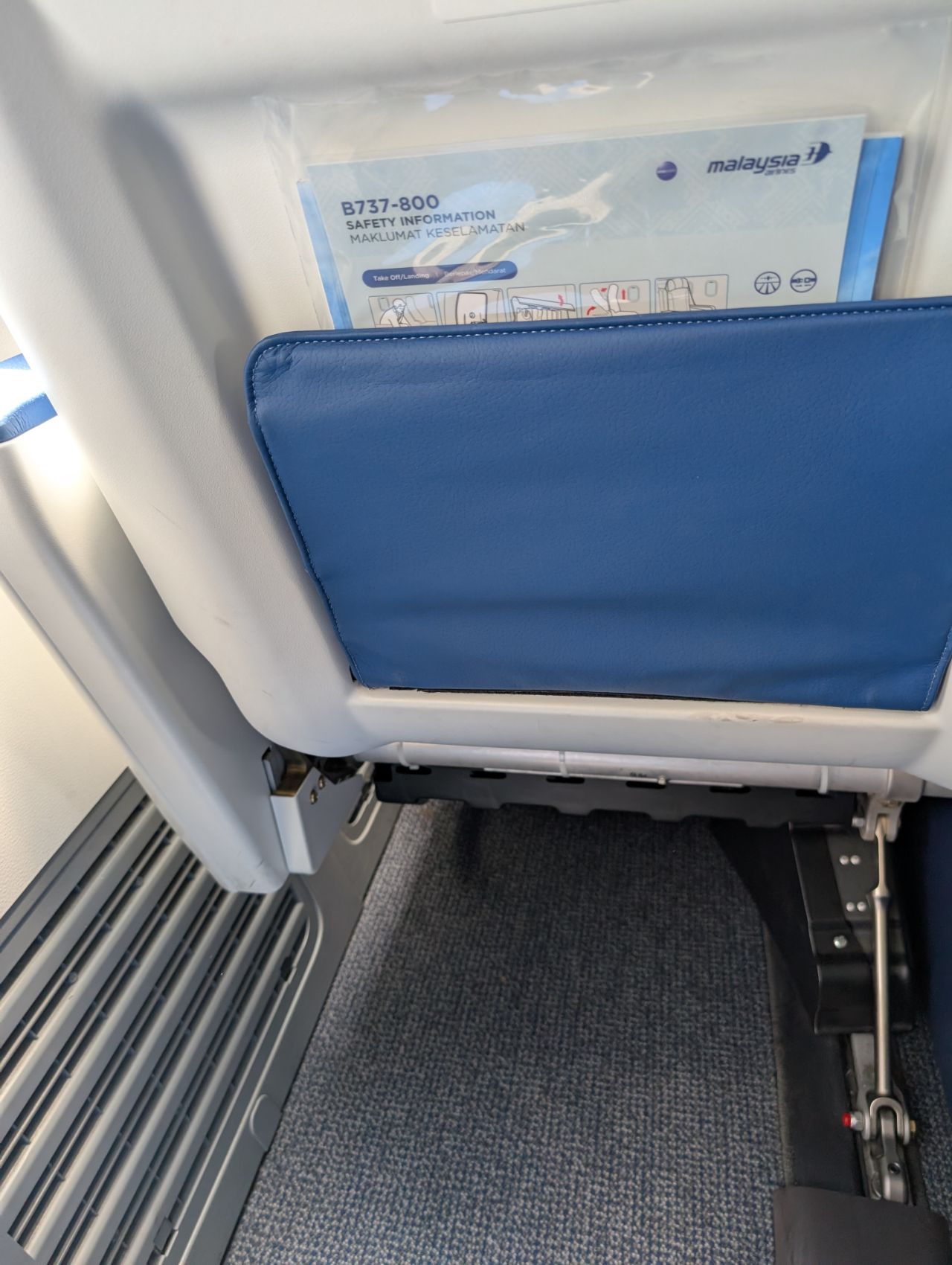
The Z600 has an option for electric seat controls, but Malaysia Airlines went with manual controls to save fuel the earth. It’s a throwback to the good old days of round, metallic buttons, but it gets the job done. Here’s where you’ll also find a shallow cutout for a tablet or book.
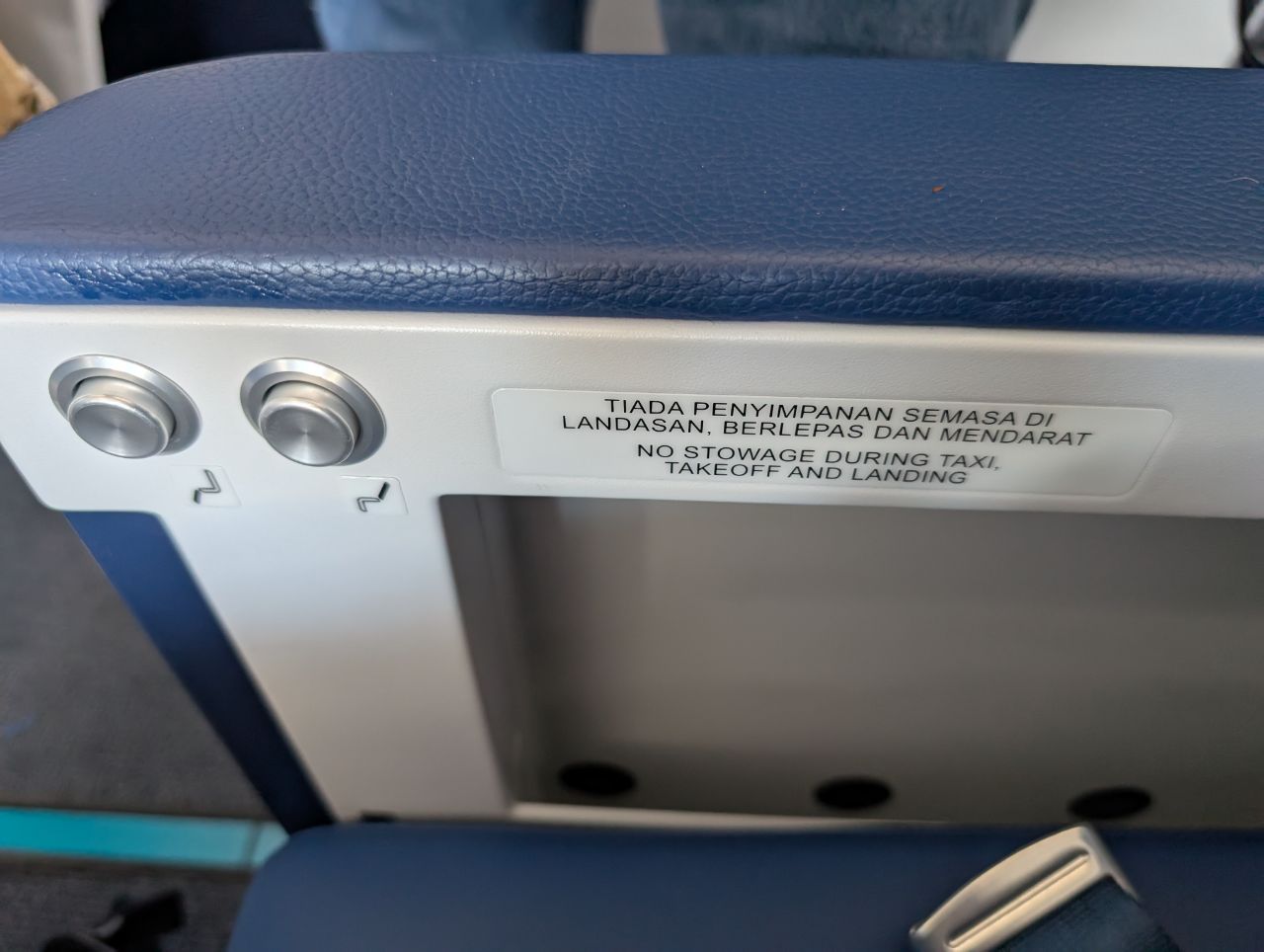
Between each pair of seats is a cutout for water bottles. As you can see, the seat wasn’t properly cleaned, and there was sticky residue on the plastic shell. I also found sticky residue on my armrest, which thankfully came off quickly with a wet tissue. Still, it feels like the kind of thing that should have been properly cleaned during the turnaround.
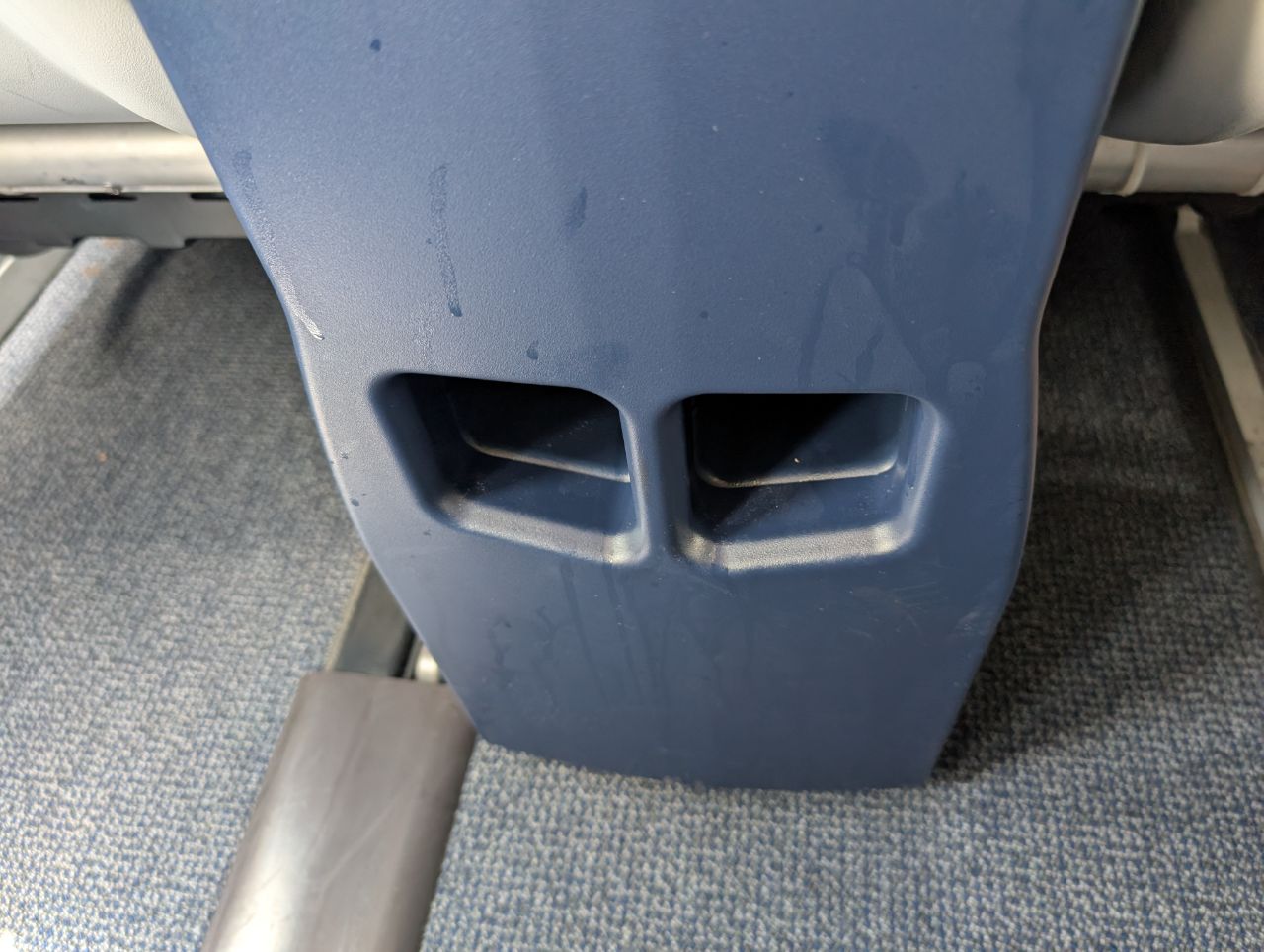
As mentioned earlier, Malaysia Airlines decided to remove all seatback inflight entertainment screens to save fuel the earth. Instead, they’ve installed personal electronic device (PED) holders for phones and tablets, and switched to streaming-based inflight entertainment (more on that below).
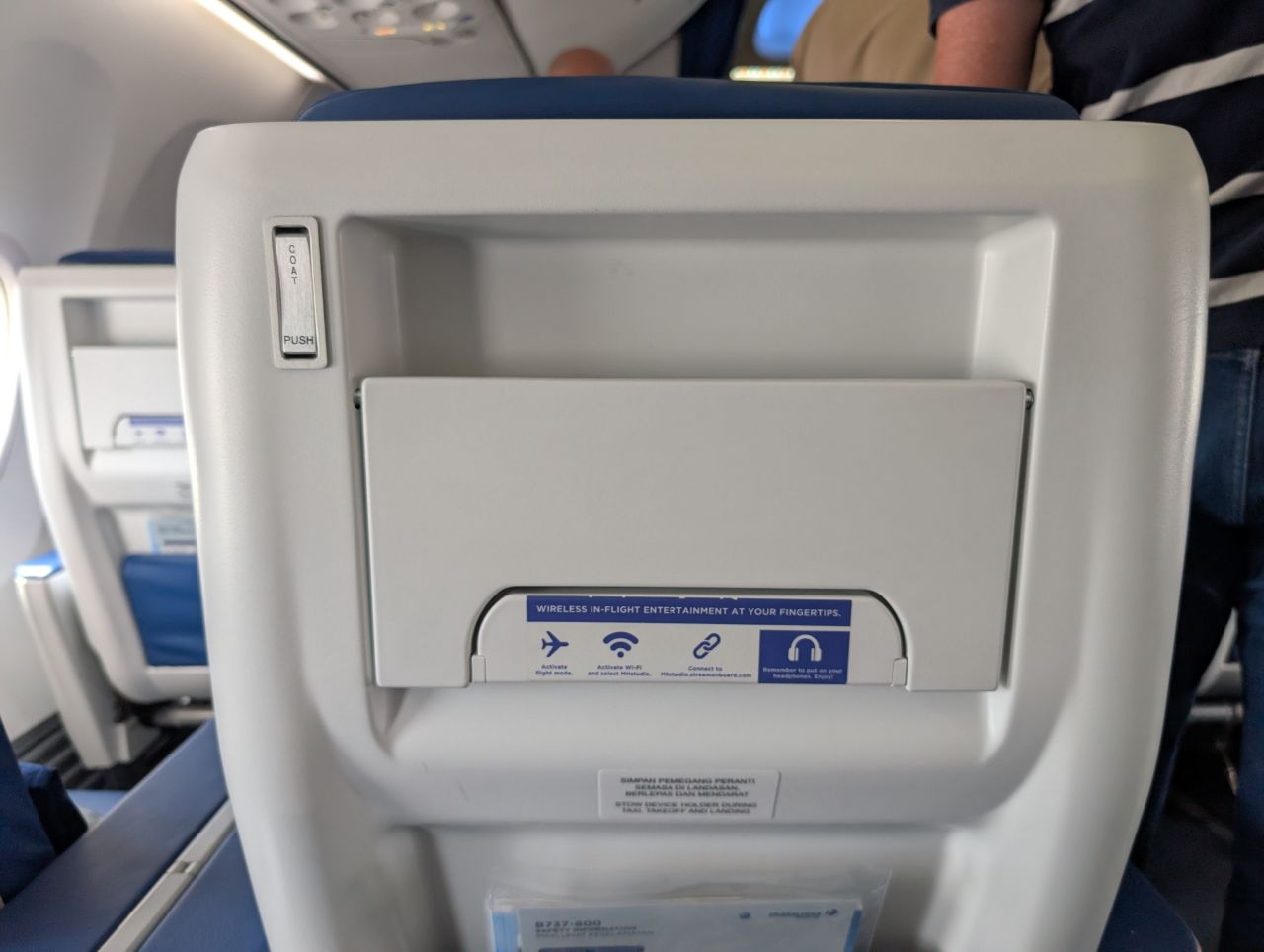
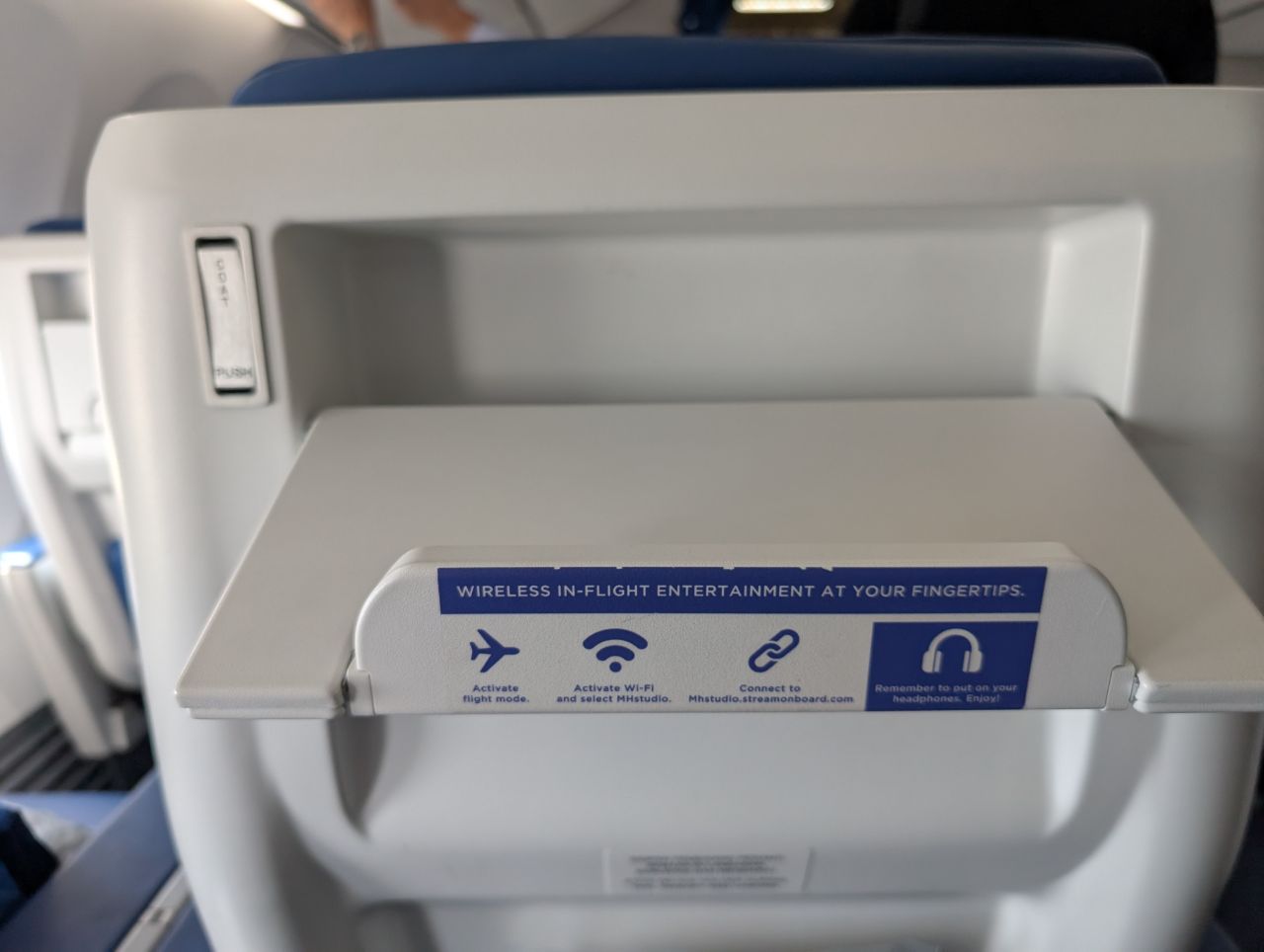
I can’t say I’m a fan of this decision. Say what you will about us being addicted to screens, but the seat feels strangely incomplete without a black mirror staring me in the face. It makes the vibe feel more akin to a low-cost carrier than a full-service one, and it’s not like the tickets get any cheaper.
Probably the only good thing about this refresh, tech-wise, is that every Business Class seat has its own universal power outlet, USB-A and USB-C port with 60W charging (Economy Class seats get USB-A and C charging, but no power outlet). This means you can bring a PD-compatible USB-C cable to charge your laptop, and leave your charging brick at home.
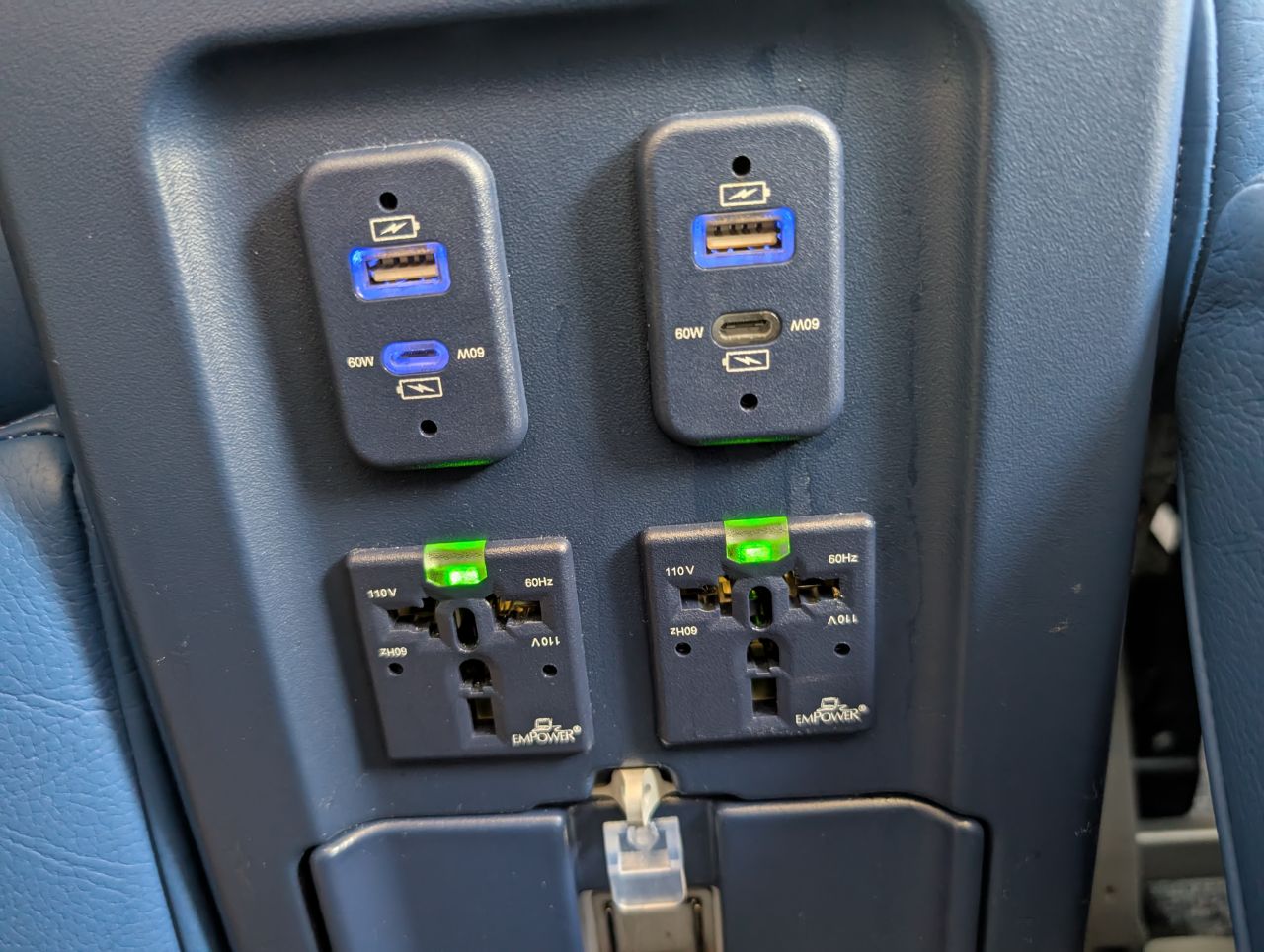
The single-piece tray table slides out from the centre armrest, and was reasonably spacious.

Finally, there are individual air vents above the seats, allowing you to adjust the air flow as needed.
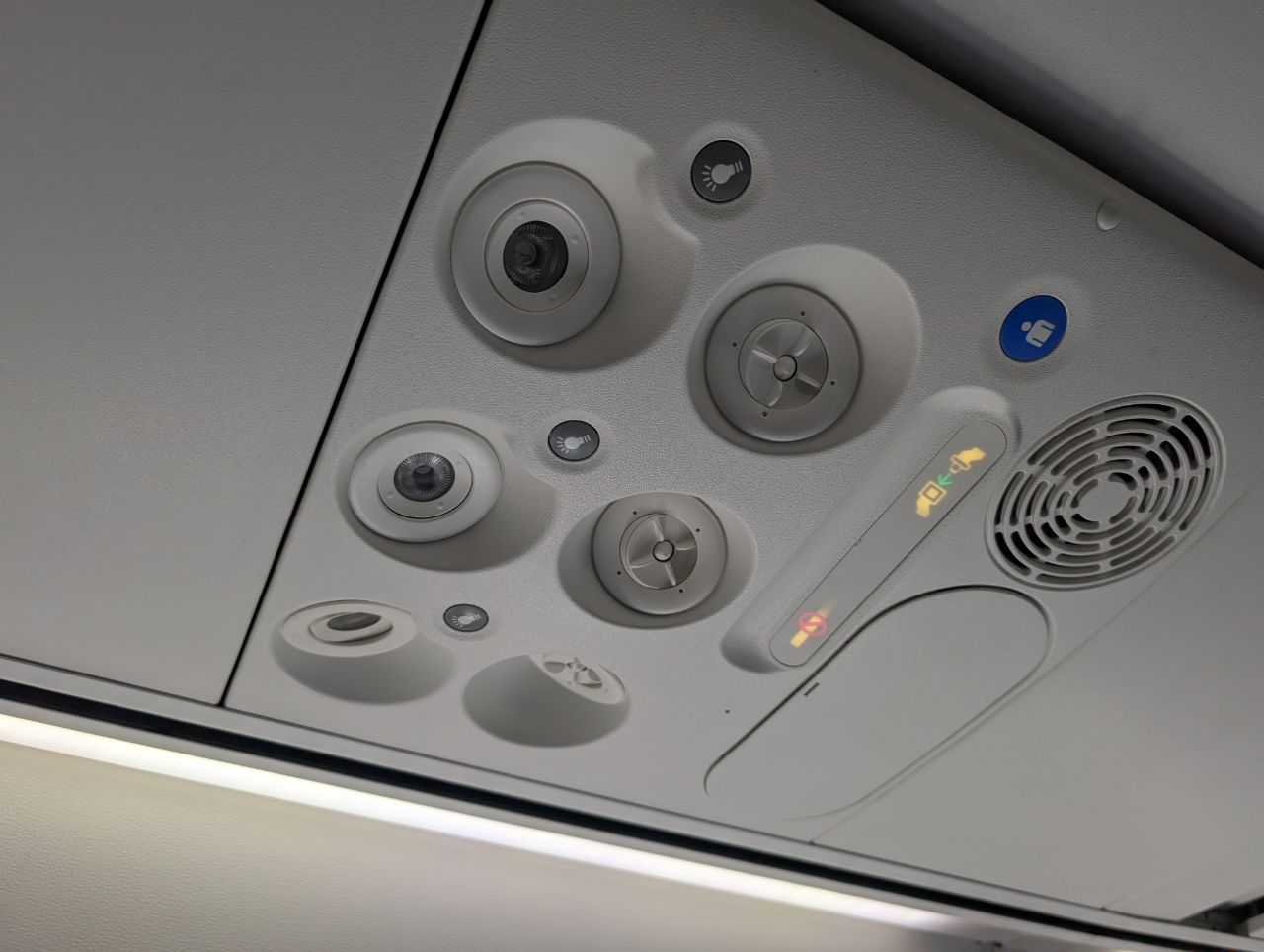
Dining
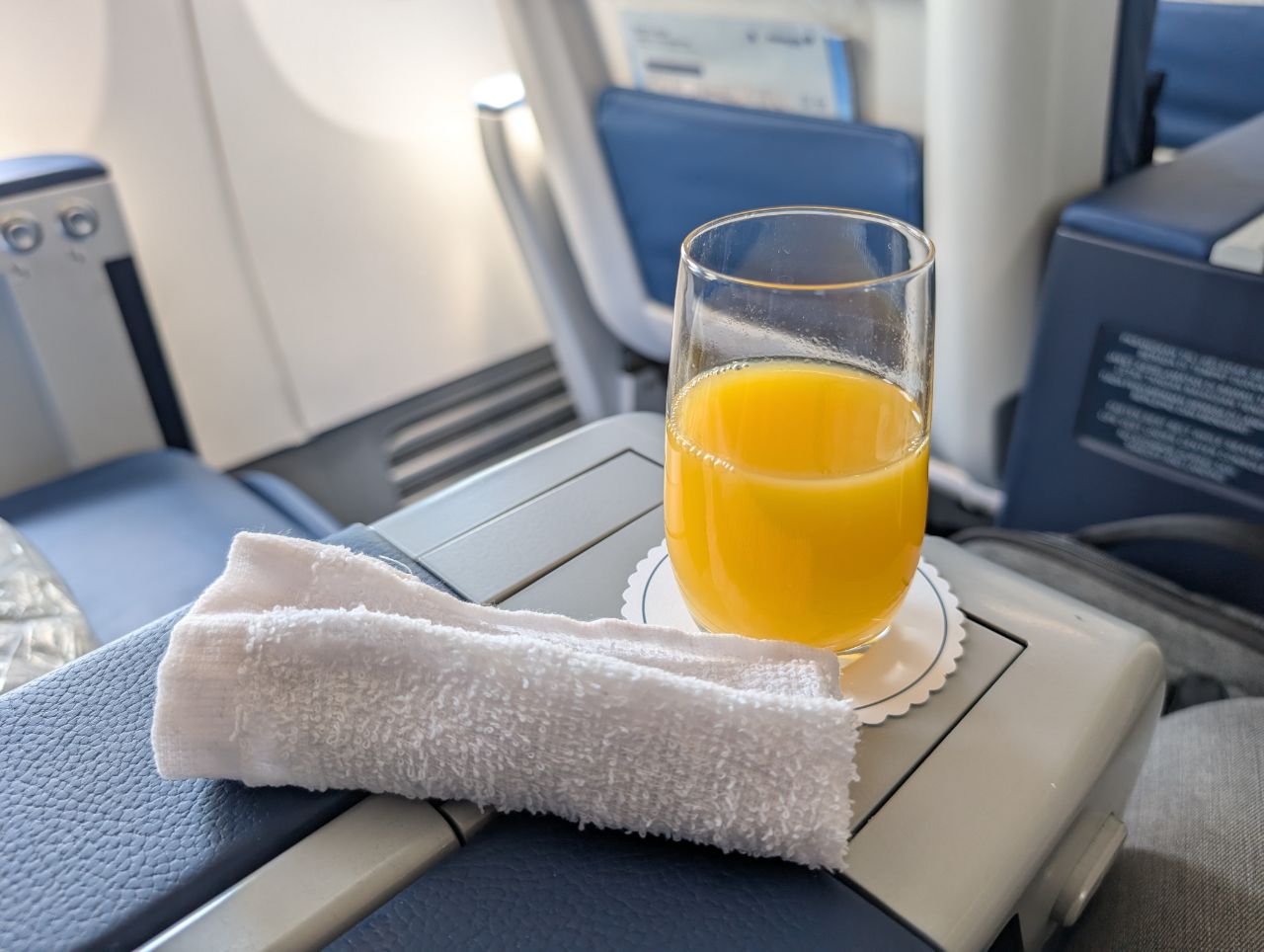
Prior to take-off, the cabin crew came around with pre-departure drinks and hot towels. There was a choice of apple juice, orange juice or water.
Malaysia Airlines does not serve alcohol on flights below three hours (with the exception of Bangkok), so this was a dry flight. If you can’t go an hour without a drink, then you might want to fly Singapore Airlines instead, which offers a choice of red or white wine on the SIN-KUL route (but no champagne).
Since this was an extremely brief flight, I was curious to see what the catering would be. I was pleased to receive a choice of a hot (Roti Jala with chicken curry) or cold (tuna sandwich) meal, and went with the former.
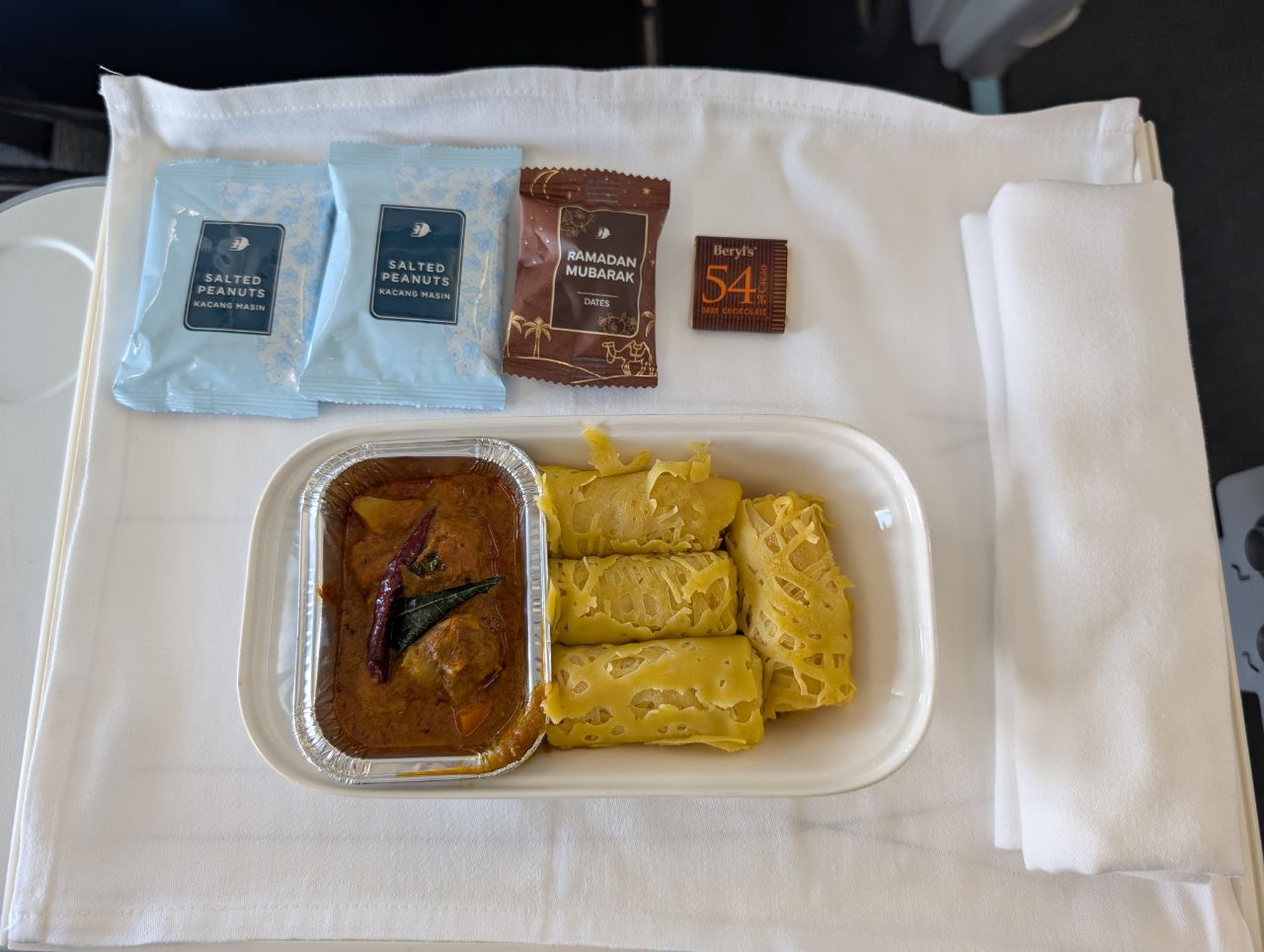
This was served with two packets of peanuts, a pack of dates (a special item for Ramadan, I understand), and a little square of Beryl’s chocolate.
It wasn’t anything fancy, but even getting a hot meal on a flight this short is an impressive feat. Perhaps this is one of the reasons why Singapore Airlines felt obligated to upgrade its inflight catering on this route from a mere sandwich to something more substantial, but even so its catering on the SIN-KUL route is cold food only.
Inflight Entertainment
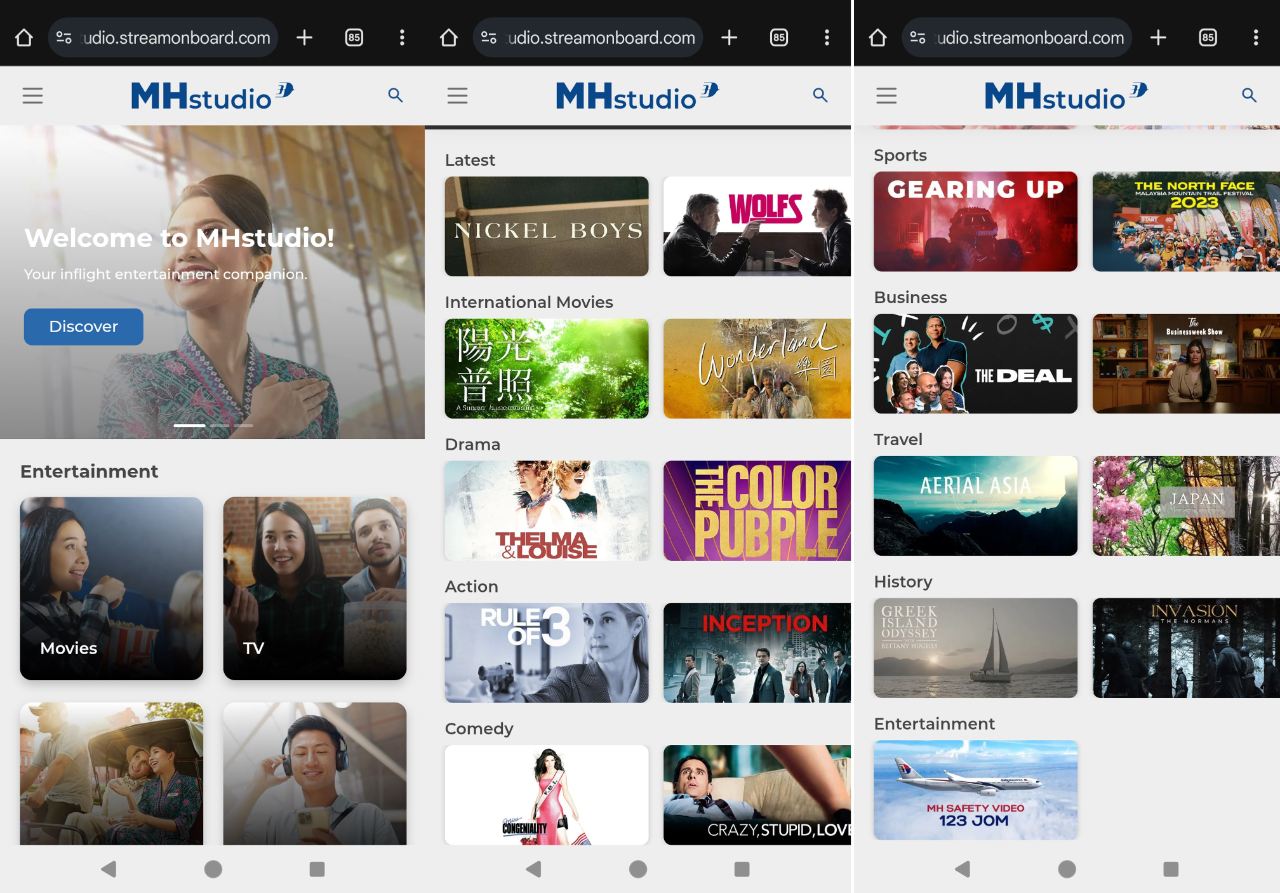
With seatback screens removed, Malaysia Airlines has switched to wireless entertainment streaming on its B737-800s, replacing the previous Panasonic Avionics system.
MHstudio offers a wide selection of movies, TV shows and music, streamed to your personal device free of charge. I found that the system worked well, though the annoying thing is that every time you start watching something, there’s a 30 second unskippable advertisement.
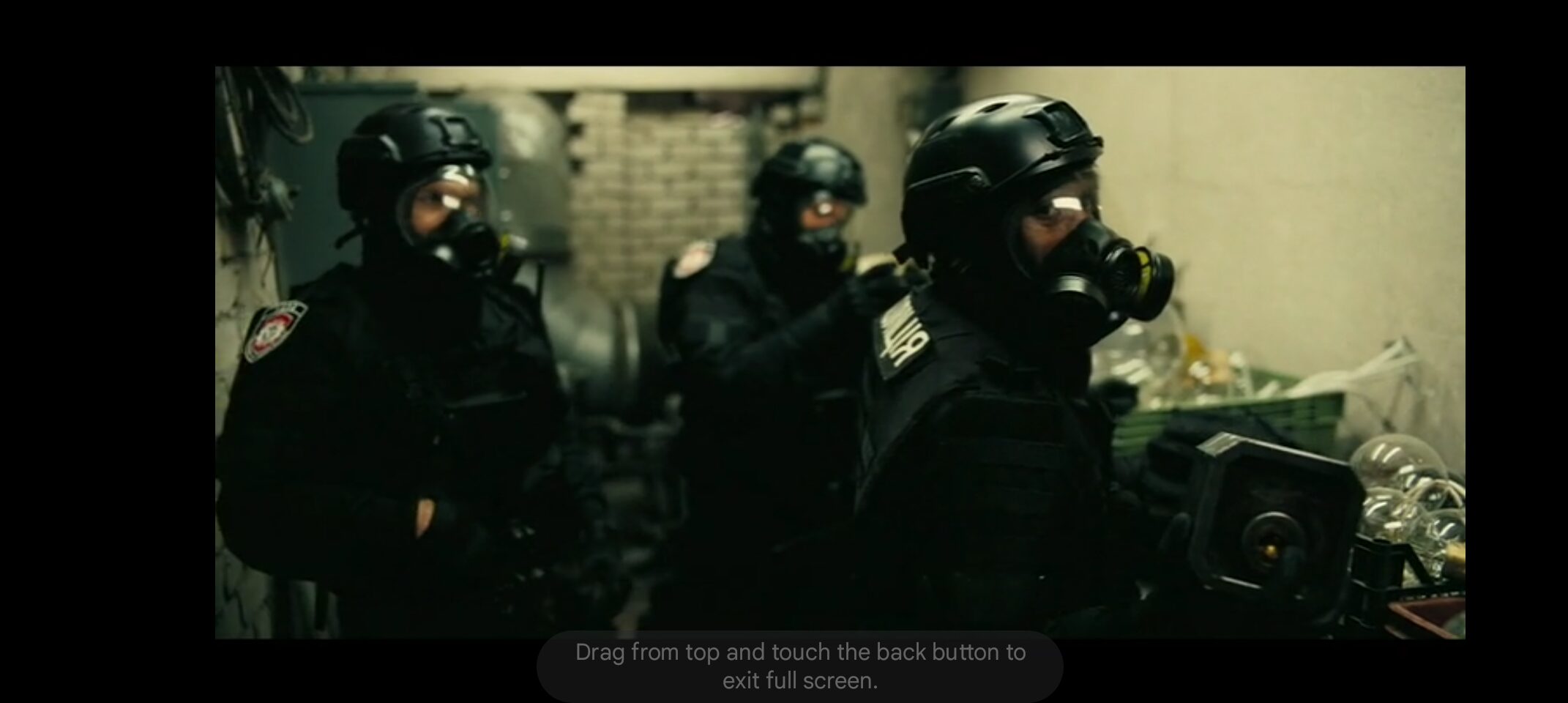
Also, the system wasn’t available until after we hit cruising altitude, so unlike a traditional IFE system, which you can watch gate-to-gate, you’ll have to find something else to do during the taxi and climb out.
So is this a step forward or a step back?
Well, the BYOD model certainly has some advantages. Your personal device is likely to be more responsive and easier to navigate than a resistive touchscreen panel. You can use your personal Bluetooth headphones as well, a more hygienic arrangement than pressing a grubby screen and hoping the headsets have been sanitised properly.
On the other hand, I still prefer the option of a traditional seatback screen, even if I don’t end up using it. It’s also useful for those who are less tech-savvy, or for parents who want to retain their own personal device but give their children something to watch.
Wi-Fi
While Malaysia Airlines has installed wireless streaming, it has not installed Wi-Fi on its B737-800s, and has no intention of doing so.
Now, I know what you’re thinking: Singapore Airlines doesn’t offer Wi-Fi on its B737-800s either! Indeed they don’t, but there are some important differences.
First, Singapore Airlines has just four of these aircraft in its fleet, and will phase them out by the end of 2025. Malaysia Airlines, on the other hand, has more than 40, and intends to fly them till at least 2028.
Second, Singapore Airlines is deploying these aircraft on short-haul routes like Kuala Lumpur, Penang, Phuket and Siem Reap (Kathmandu at 5 hours is the only exception). Malaysia Airlines flies these aircraft on short and medium haul routes including Shanghai and Perth, which is a long time to be without internet.
Malaysia Airlines offers Wi-Fi on its B737-8 MAX aircraft, but coverage isn’t 100% either as the earlier deliveries came without the system factory-installed. So inflight connectivity will be patchy on its narrow body fleet for some time to come, and that’s not good for travellers.
Lavatories
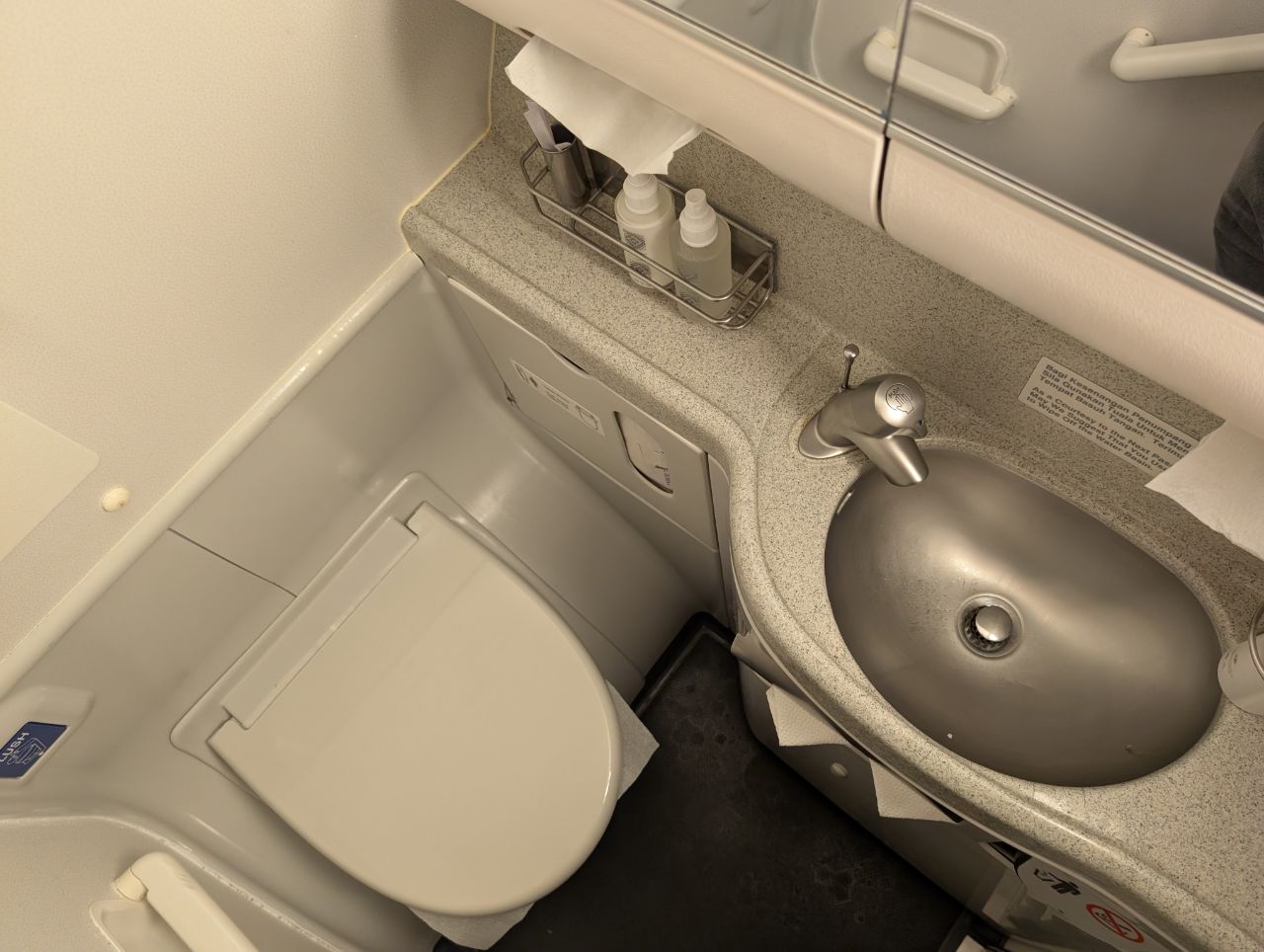
The 12 Business Class passengers share a single lavatory at the front of the aircraft. This doesn’t feature any touchless technology, but was kept reasonably clean throughout the flight.
Unbranded hand and body lotion and eau de toilette were stocked.
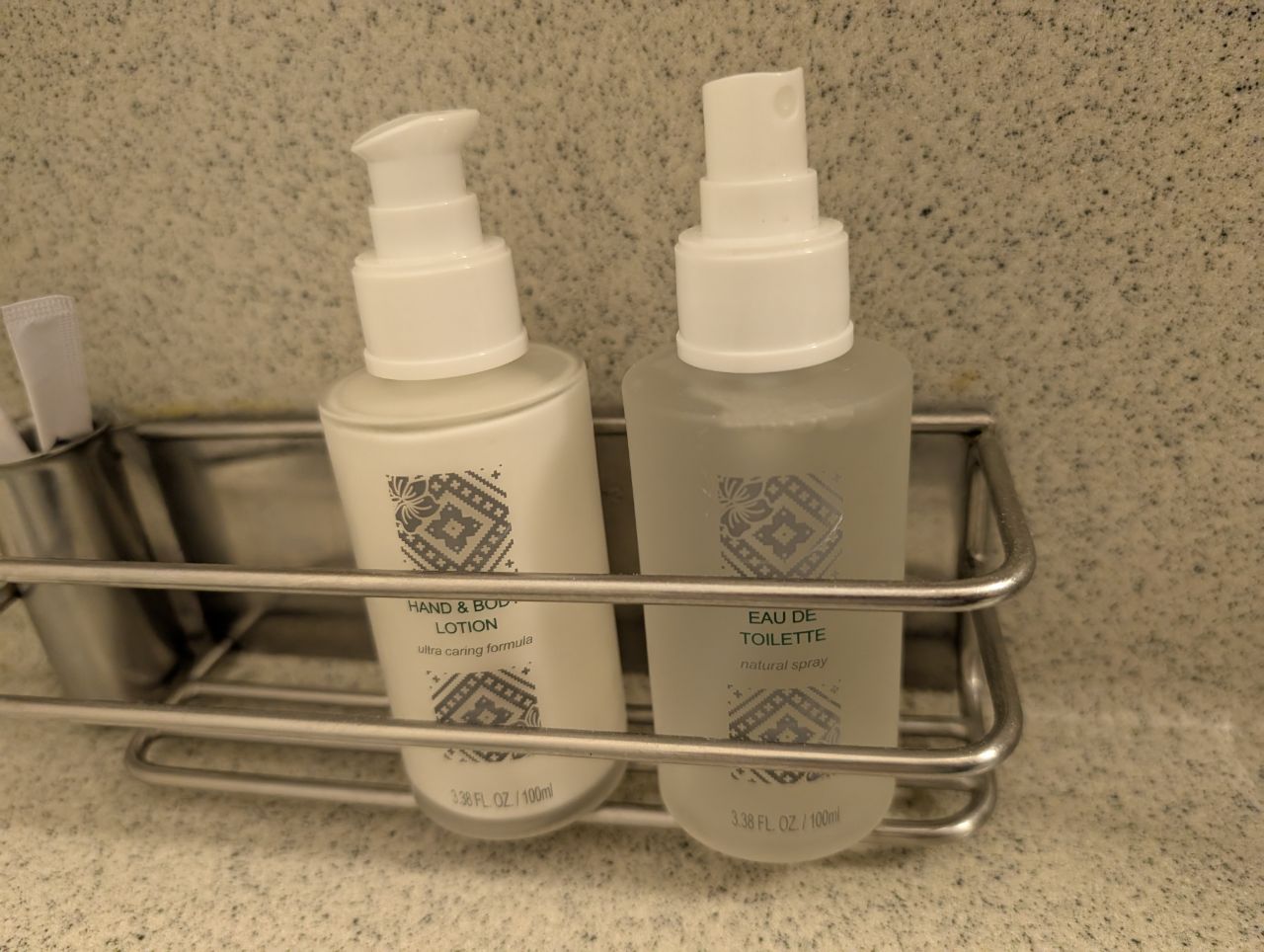
Conclusion
Malaysia Airlines’ refurbished B737-800 cabins bring some nice new features like USB-C charging and streaming entertainment, though I wish they’d stop trying to pass off these cost-cutting measures as eco-consciousness. No one blames you for wanting to save on fuel costs, but the whole Captain Planet act gets annoying fast.
As for the Business Class experience, it was pleasant enough for a short route like Kuala Lumpur to Singapore, and should hold up well on daytime flights within a three-hour or so radius. But for longer flights (especially red-eyes), passengers will feel the absence of features like flatbeds, privacy shields, seatback entertainment and Wi-Fi more acutely. For what it’s worth, Malaysia Airlines does intend to install flatbeds on its narrow body fleet eventually, when the newer Max aircraft arrive.
Overall, the refreshed B737-800 feels like a slightly nicer budget cabin, rather than what you’d expect on a full-service carrier.
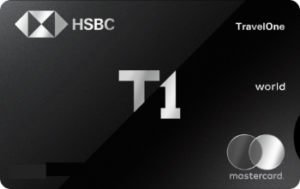






“ leave your charging brick at home.” think the better advise would be to leave in your check in baggage right ?
If traveling will need to charge our device in the hotel etc.
Just thinking aloud
There is free WIFI for longer route. Malaysia Airlines advertises that it is one of the first to provide free WIFI even. Specifically for SIN-KUL, WIFI won’t be too realistic either with the low altitude flown.
There is no wifi on the 737-800s regardless of flight length
My comment was more on flights between SIN and KUL if any confusion. Will A330 get WIFI if it flies between SIN and KUL, I wonder.
Free WiFi to whom I wonder. My encounters are that SQ is the only one that sincerely offers free WiFi without any strings attached, well except having a KF membership. MH excels at some things but WiFi isn’t one of it.
To anyone on a flight with WIFI coverage.
Was supposed to fly this Biz product on MH616 yesterday which was cancelled. They rebooked me on SQ126 on the A350, which can be considered as an upgrade.
Only downside is I missed out on using the Oneworld lounge safari, which was the original intent of booking. First (One) World problems …
Very arguable whether MH should even be considered a “full service carrier” in 2025.
Aging fleet, brain drain (what’s new with Malaysia – but of course blamed SQ as the bogeyman) especially for their skilled technical/maintenance workers, and a national airport that isn’t exactly world class.